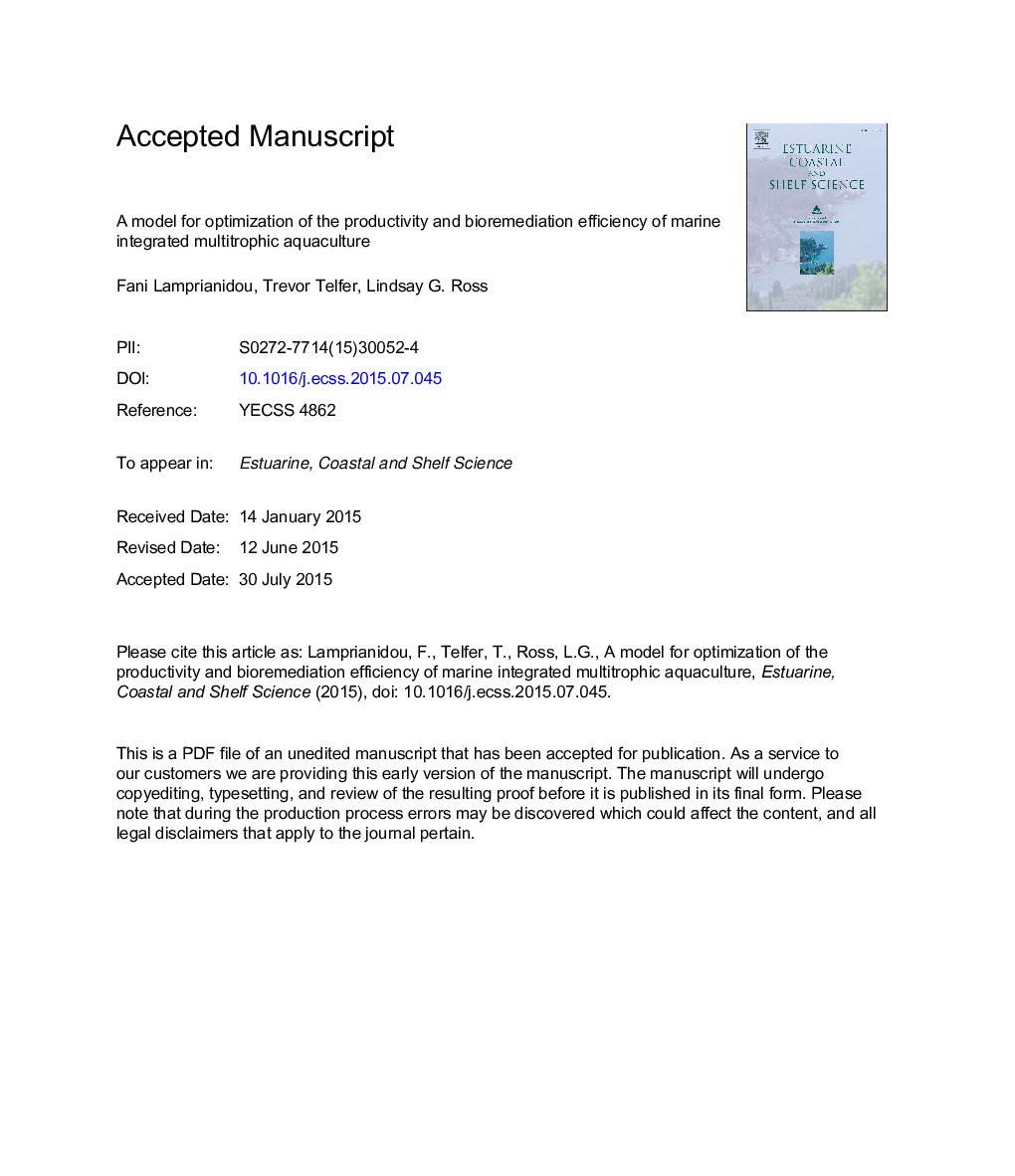| کد مقاله | کد نشریه | سال انتشار | مقاله انگلیسی | نسخه تمام متن |
|---|---|---|---|---|
| 6384707 | 1626633 | 2015 | 32 صفحه PDF | دانلود رایگان |
عنوان انگلیسی مقاله ISI
A model for optimization of the productivity and bioremediation efficiency of marine integrated multitrophic aquaculture
ترجمه فارسی عنوان
یک مدل برای بهینه سازی بهره وری و بهره وری بهره برداری از آبزی پروری یکپارچه چندگانه دریایی
دانلود مقاله + سفارش ترجمه
دانلود مقاله ISI انگلیسی
رایگان برای ایرانیان
کلمات کلیدی
موضوعات مرتبط
مهندسی و علوم پایه
علوم زمین و سیارات
زمین شناسی
چکیده انگلیسی
Integrated multitrophic aquaculture (IMTA) has been proposed as a solution to nutrient enrichment generated by intensive fish mariculture. In order to evaluate the potential of IMTA as a nutrient bioremediation method it is essential to know the ratio of fed to extractive organisms required for the removal of a given proportion of the waste nutrients. This ratio depends on the species that compose the IMTA system, on the environmental conditions and on production practices at a target site. Due to the complexity of IMTA the development of a model is essential for designing efficient IMTA systems. In this study, a generic nutrient flux model for IMTA was developed and used to assess the potential of IMTA as a method for nutrient bioremediation. A baseline simulation consisting of three growth models for Atlantic salmon Salmo salar, the sea urchin Paracentrotus lividus and for the macroalgae Ulva sp. is described. The three growth models interact with each other and with their surrounding environment and they are all linked via processes that affect the release and assimilation of particulate organic nitrogen (PON) and dissolved inorganic nitrogen (DIN). The model forcing functions are environmental parameters with temporal variations that enables investigation of the understanding of interactions among IMTA components and of the effect of environmental parameters. The baseline simulation has been developed for marine species in a virtually closed system in which hydrodynamic influences on the system are not considered. The model can be used as a predictive tool for comparing the nitrogen bioremediation efficiency of IMTA systems under different environmental conditions (temperature, irradiance and ambient nutrient concentration) and production practices, for example seaweed harvesting frequency, seaweed culture depth, nitrogen content of feed and others, or of IMTA systems with varying combinations of cultured species and can be extended to open water IMTA once coupled with waste distribution models.
ناشر
Database: Elsevier - ScienceDirect (ساینس دایرکت)
Journal: Estuarine, Coastal and Shelf Science - Volume 164, 5 October 2015, Pages 253-264
Journal: Estuarine, Coastal and Shelf Science - Volume 164, 5 October 2015, Pages 253-264
نویسندگان
Fani Lamprianidou, Trevor Telfer, Lindsay G. Ross,
